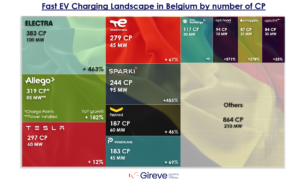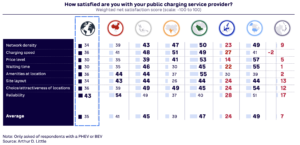A report published by the NREL unveils the quantitative needs assessment for a national charging network capable of supporting the rapid transition to Plug-in Electric Vehicles (PEVs) in the United States. The report comes as the U.S. strives to achieve economy-wide net-zero greenhouse gas emissions by 2050 and meets the ambitious climate goals set forth by the U.S. Department of Energy.
According to the report, the adoption of PEVs is poised to become the preferred technology for achieving the decarbonization of the light-duty vehicle fleet. It highlights the significant progress already made, with PEV sales accounting for 7%-10% of the U.S. light-duty market as of early 2023. Globally, PEVs captured 14% of the light-duty market in 2022, with China and Europe leading the way.
The report emphasizes the crucial role of a national charging network in supporting the projected growth of PEVs. It underscores the need for convenient, affordable, reliable, and equitable charging infrastructure to facilitate the transition to electric mobility. The analysis reveals that by 2030, the national network could consist of 26-35 million charging ports, accommodating 30-42 million PEVs on the road.
The study recognizes the importance of home charging as the foundation of the charging ecosystem due to its cost-effectiveness and convenience. However, it emphasizes the need for reliable public fast charging to boost consumer confidence in PEV adoption. The ideal charging network should strike the right balance between fast charging and convenient destination charging in suitable locations.
The report also highlights the multiple use cases for fast charging, including supporting drivers without residential access to charging, facilitating ride-hailing electrification, and enabling long-distance travel. It predicts that by 2030, fast chargers rated for at least 350 kW will be the most prevalent technology across the national charging network.
Moreover, the size and composition of the 2030 national charging network will vary based on evolving consumer behavior and community-specific needs. The report emphasizes the importance of continued investments in U.S. charging infrastructure, estimating a cumulative capital investment of $53-$127 billion by 2030, including private residential charging.
The study acknowledges the existing commitments and investments made by both the private sector and public entities, putting the United States on track to meet the anticipated infrastructure needs. It identifies the necessity of long-term market certainty and sustained consumer demand to drive further investments and achieve the projected goals.
As the nation progresses towards a sustainable transportation future, the report emphasizes the need for efficient deployment of charging infrastructure, streamlined permitting processes, and utility service connections. The balance of supply and demand for charging should be closely monitored, ensuring that infrastructure development keeps pace with vehicle deployment without compromising financial viability.
The report concludes with a new conceptual model for charging infrastructure planning, likening it to a tree. It envisions a future national charging network comprising visible public charging, hidden private charging (akin to the roots), a reliable fast charging trunk, and a broad set of publicly accessible destination charging locations (resembling branches) strategically positioned to enhance the driving experience.
Get ‘FREE OF CHARGE’ access to this and more than 600 other valuable EV Market Reports, and monitor 610.660 European Charge Points via www.EVMarketsReports.com , the world’s largest e-Mobility Reports and Outlooks database. Enjoy reading!




